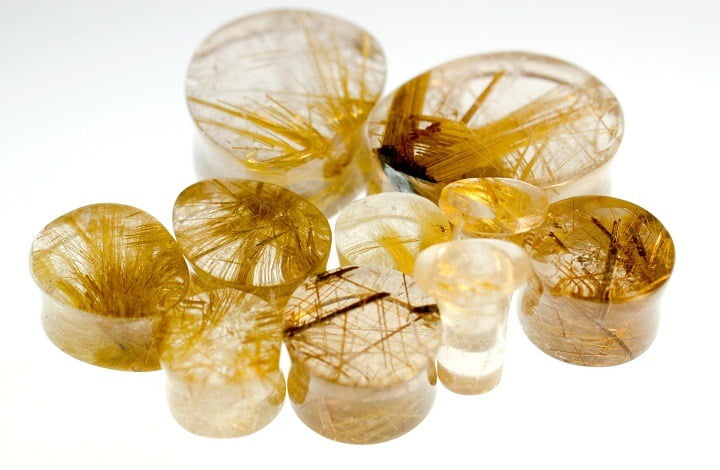Rutile (or rutilated) quartz is clear and smoky quartz. It has inclusions on the surface. The rutile is like a needle which forms lovely patterns like miniature sculpture.
Recently it was found that some rutile topaz has a similar looking gem with added attraction of topaz’s additional hardness and better brilliance. However, this gem with ribbon like inclusions in rutile topaz is actually quite different from those in rutile quartz.
The Gemological Institute of America (GIA) published an article in their journal years ago (Gems & Gemology, Summer 1987) that explained this difference. According to this article, the needle-like inclusions in so-called rutile topaz actually was of limonite staining that fills hollow tubes in the topaz. Get Gemstone Recommendation
Limonite is quite a different mineral from rutile. Rutile is basically titanium dioxide and has an exceptionally high refractive index; much higher than that of diamond. Limonite cannot be called a true mineral, but it is composed of a varying mixture of hydrated iron oxide minerals such as goethite and lepidocrocite.
Thus we can consider that name rutile topaz is a misnomer. The name has been taken from similar better-known rutile quartz but has persisted even as more accurate information which reached the market.
If we compare number of different samples of rutile quartz and rutile topaz, we may see many differences and the range of patterns in rutile quartz tends to be much greater, and cluster of needles are common in quartz. The rutile quartz has greater area of transparency and it looks much fascinated when we admire it from near.
Before buying rutilated quartz make sure to get a certificate from a reputed gem lab because there are many gemstone sellers selling fake quartz in the name of rutilated quartz. This variety of quartz is very rare and it is difficult to find original Rutilated Quartz.

